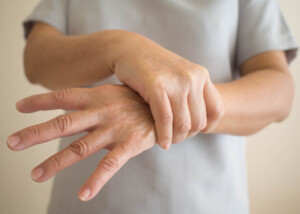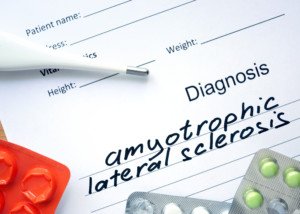
This isn’t about why the muscle twitching of ALS spreads throughout the body, but why benign fasciculations quickly spread to other areas of the body.
And this quick, so-called spreading typically occurs the moment a person discovers that muscle twitching is one of the symptoms of amyotrophic lateral sclerosis.
Whether the individual’s initial twitching began in the arch of a foot, back of the upper leg, the calf, somewhere in the back, a finger or their neck – the twitching rapidly spreads to the point where it ends up being all over the body.
“All over” may refer to all four limbs, or to the trunk, eyelids, butt and shoulders, or to alternations between major areas such as the calves, then upper legs, then face, then upper legs, etc.
Too Simple…
For some people, it’s too simplistic to just say that anxiety drives this reaction to the fear of having ALS.
It’s too simplistic, perhaps, to point out that feeling fear puts the body in a preparation state for a fight or flight.
If the body’s going to prepare for a fight or flight from a perceived threat (in this case, a deadly disease), the muscles all over will be involved.
After all, you can’t fight or escape from a threat with only one small section of your body. Thus, the twitching is felt all over.
“Muscles are generally not used in isolation, and we use many muscles throughout the course of the day,” says Mitzi J. Williams, MD, clinical neurologist with Morehouse School of Medicine and clinical advisor for the Multiple Sclerosis Foundation.
“Muscle twitching can occur in different muscles as we use different ones. In the case of ALS, the twitching spreads as more nerve junctions are affected.”
But the spread of ALS twitching occurs many times slower than the spread of benign fasciculations driven by anxiety.
Harmless muscle twitching can go from zero to 60 in just seconds with heart-pounding anxiety.
Many men and women suffer from this anxiety, especially if they have pre-existing health worries.
“I would tell them that ALS is characterized by muscle twitching and weakness in various areas of the body,” says Dr. Williams.
“If you have stable twitching with no weakness, and you have been evaluated by a healthcare professional, then it is not likely related to a serious condition.
“Again, pair the knowledge you obtain from reading with a formal medical assessment. Also remember that sometimes anxiety can increase twitching as well.”
Other Benign Causes of Fasciculations
• Caffeine
• Dehydration
• Electrolyte imbalance
• Exercise or physical exertion
• Fatigue or localized muscle strain
• Magnesium deficiency
• Overuse of a small muscle group (e.g., twitching finger from excessive computer mouse use)

Dr. Williams is author of “MS Made Simple: The Essential Guide to Understanding Your Multiple Sclerosis Diagnosis.” She is a member of the American Academy of Neurology.
 Lorra Garrick has been covering medical, fitness and cybersecurity topics for many years, having written thousands of articles for print magazines and websites, including as a ghostwriter. She’s also a former ACE-certified personal trainer.
Lorra Garrick has been covering medical, fitness and cybersecurity topics for many years, having written thousands of articles for print magazines and websites, including as a ghostwriter. She’s also a former ACE-certified personal trainer.
.


























